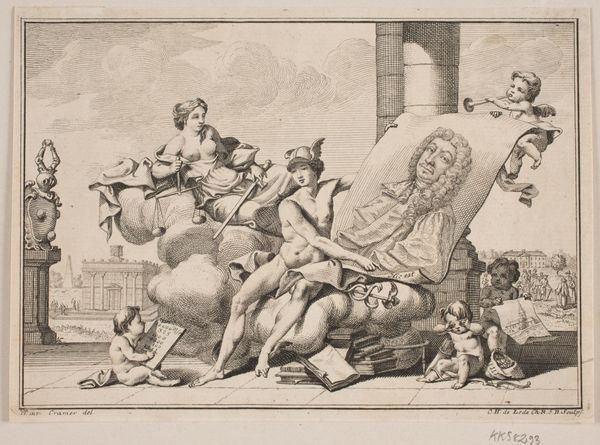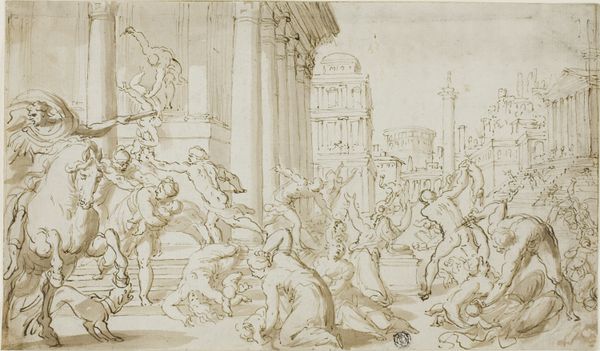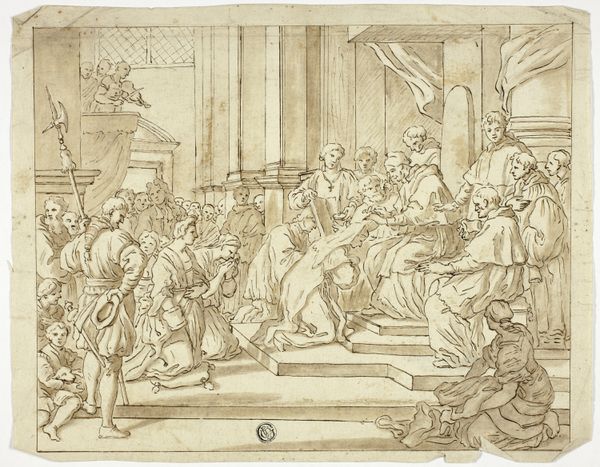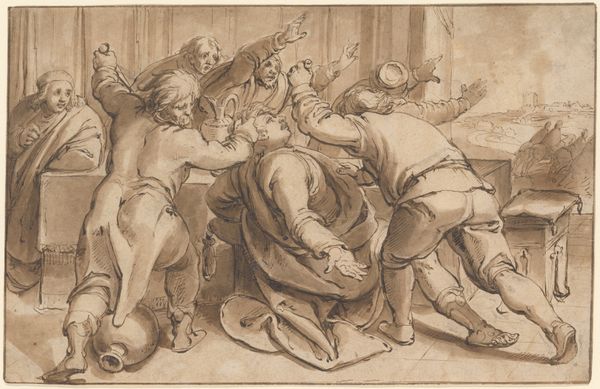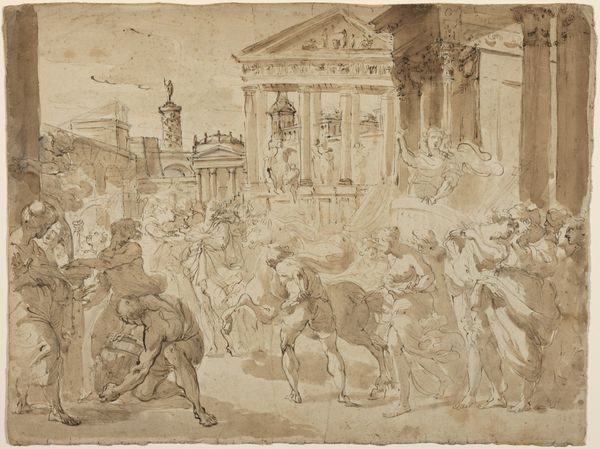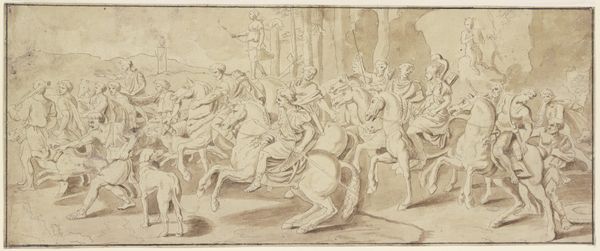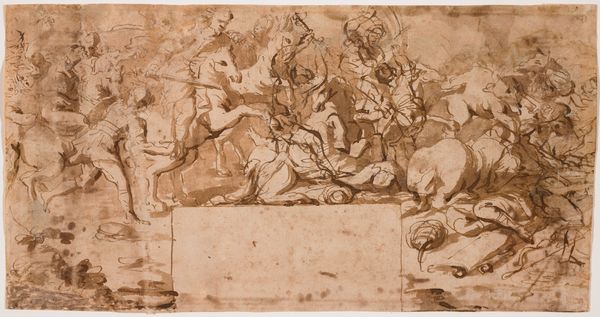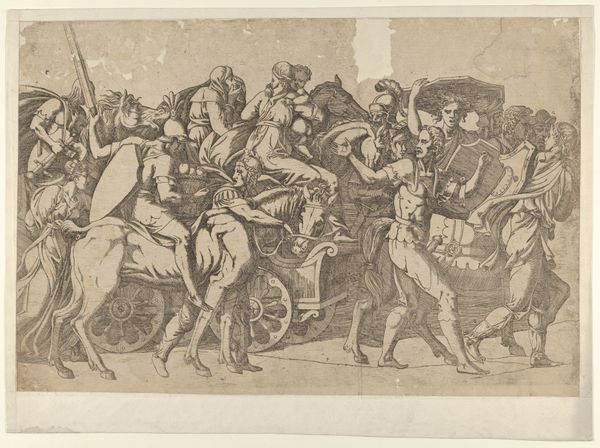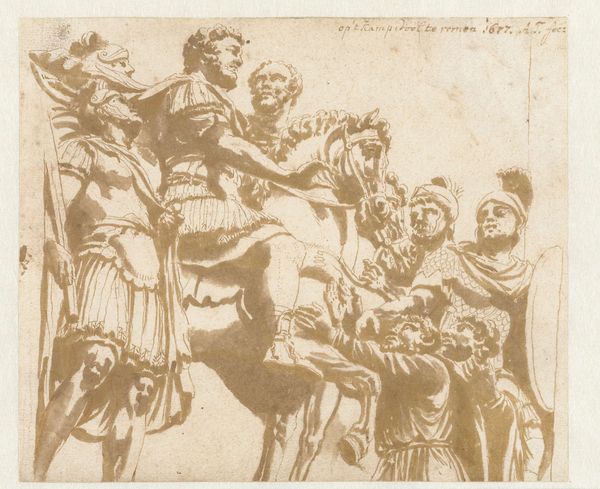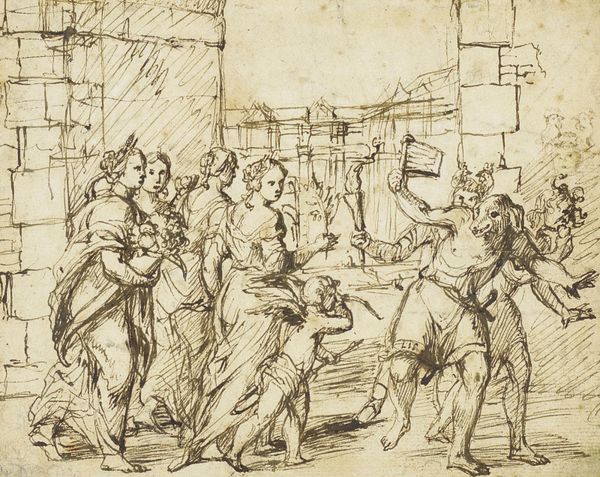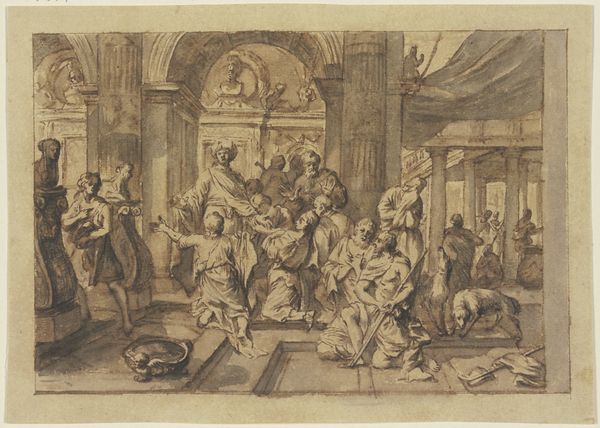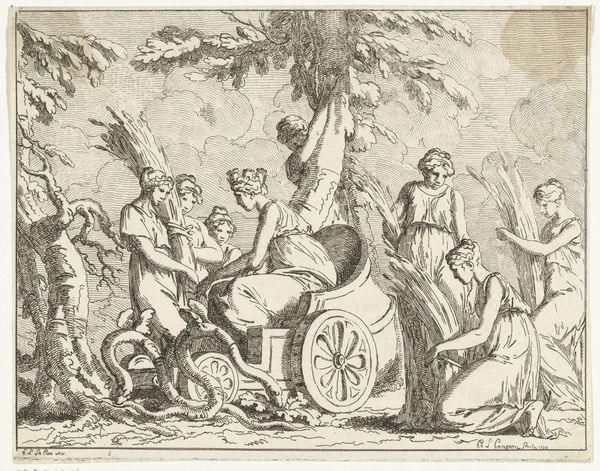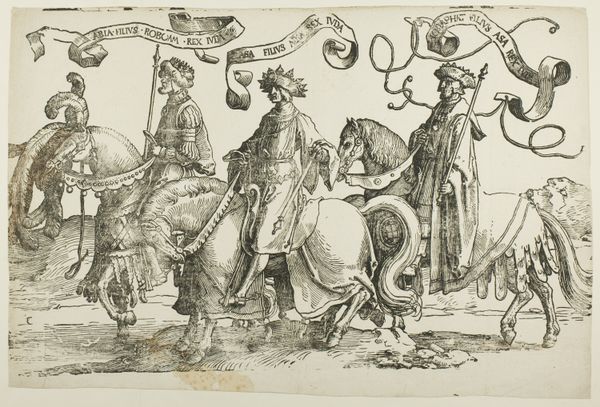
drawing, paper, ink
#
drawing
#
allegory
#
narrative-art
#
baroque
#
figuration
#
paper
#
ink
#
history-painting
Dimensions: 266 mm (height) x 469 mm (width) (bladmaal)
Curator: What an unsettling scene. This drawing, dating back to between 1600 and 1700, is called "Tullia driving her chariot over her father’s body". It’s currently held here at the SMK, Statens Museum for Kunst. Editor: That’s putting it mildly. The sepia ink gives it an old world feel, but there’s nothing delicate about the composition. It's a scene of brutal violence! The churning horses, the woman with such... determination, the crushed figure… I can practically feel the weight of those chariot wheels. Curator: The history behind this depiction is compelling. Tullia Minor, the last queen of Rome, was known for her ambition. After her husband murdered her father, the king, Tullia reportedly drove her chariot over his corpse as a symbol of her ruthless pursuit of power. This narrative solidified over time, shaping political allegories across various media. Editor: Note the execution. The lines are confident, almost impulsive. Clearly the artist prioritized immediacy over polished perfection. Given the theme of unbridled ambition, it is almost fitting the process and presentation mirrors the narrative. Also, the anonymous attribution is a shame, considering the material eloquence on display! Curator: It speaks volumes about the enduring fascination with transgressive figures and their impact on the political landscape. The lack of definitive attribution only enriches the art-historical dimension. Who was commissioned to realize this artwork, and for whom? Editor: Exactly! Was this a clandestine act of historical record? A moralizing fable of tyrannical consumption rendered on humble paper? These earthy materials don’t lie; labor went into this production. Curator: What I find striking is the sheer enduring power of this story. It has found itself reproduced and reinterpreted across media throughout centuries, a symbol that speaks to us across changing sociopolitical circumstances. Editor: For me, I return to the materiality; it’s a tangible representation of human hubris – blood transmuted into ink. This piece reminds me of the profound connection between raw materials, artistic creation, and social critique. Curator: Thank you, that’s definitely provided another layer of interpretation. Editor: Agreed. A grisly drawing yet fascinating depiction overall.
Comments
No comments
Be the first to comment and join the conversation on the ultimate creative platform.
